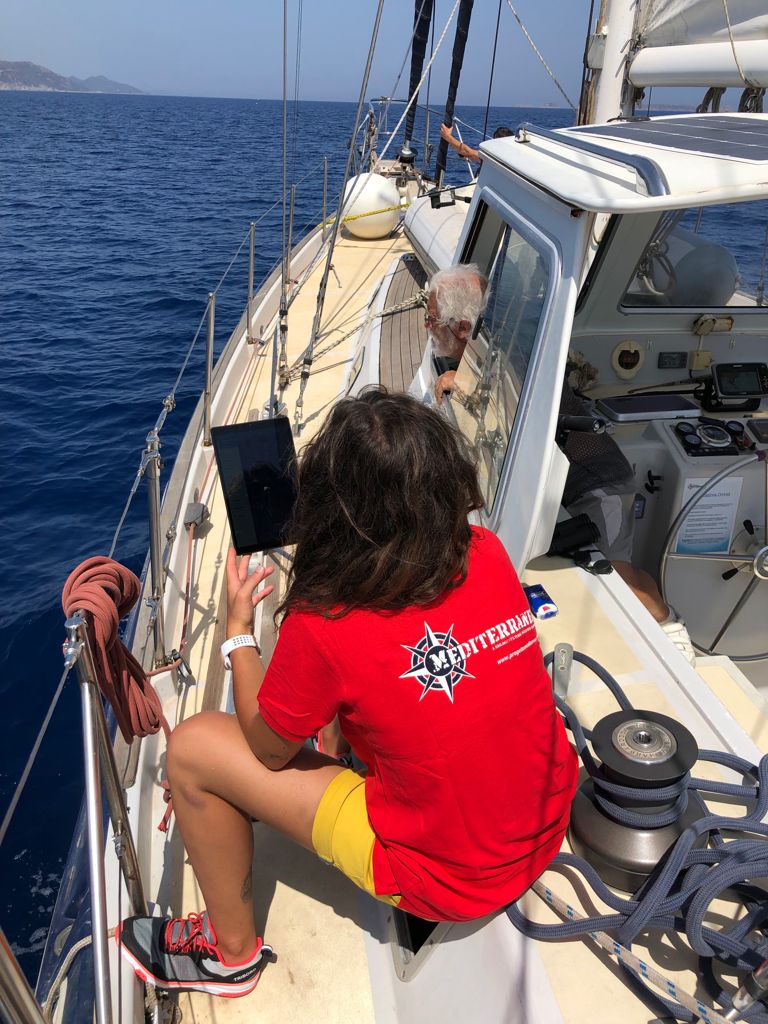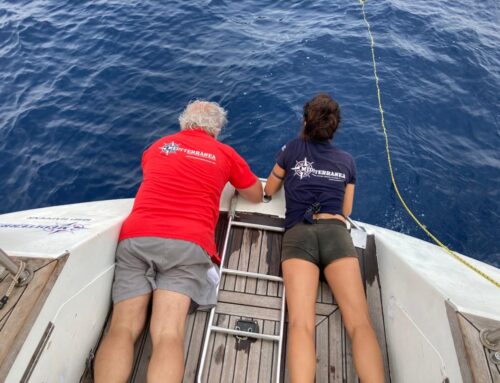 Floating Litter is a citizen science project that we are carrying out aboard Mediterranea in collaboration with ISPRA – Higher Institute for Environmental Prevention and Research and which concerns the reporting and documentation of the presence of marine litter along our navigation route.
Floating Litter is a citizen science project that we are carrying out aboard Mediterranea in collaboration with ISPRA – Higher Institute for Environmental Prevention and Research and which concerns the reporting and documentation of the presence of marine litter along our navigation route.
The term marine litter indicates any persistent solid material, which has been manufactured or worked by man and which after its use has been lost or abandoned in the marine and coastal environment. These also include fishing gear (nets, floats, buoys…) and all those materials that, scattered on land, reach the sea through rivers, wind and municipal waste. Marine litter is therefore made up of plastic, wood, metal, glass, rubber and more, while residual semi-solid materials such as mineral and vegetable oils, paraffins and other chemicals are not indicated as marine litter.
The environmental impact of marine litter – floating litter – is classified into three broad categories:
Ecological impact: it causes lethal or harmful effects on animals and plants due to trapping, accidental ingestion, accumulation of harmful substances in organic tissues and because marine litter facilitates the dispersion of alien species through transport.
Economic impact: the presence of marine litter in areas of high landscape value causes a reduction in the value of that area, and therefore reduces tourism; it can cause mechanical damage to boats and fishing equipment, as well as compromising the fishing capacity of the waters. Furthermore, the clean-up costs for the removal of marine litter are very high.
Social impact: the presence of marine litter reduces the aesthetic value of the environment and therefore of public use.
 How does the project work?
How does the project work?
Periodically, based on the weather conditions, the section of navigation, the appropriate environmental conditions, the crew of Mediterranea assigned for that day to the observation is placed on one side of the boat, usually at the maximum beam, equipped with binoculars, tablet containing the application on which to record the data and paper registration card, and identifies a sea area sufficiently suitable for the recognition of floating materials, therefore without glare, with the sun behind and in the absence of wind that raises a wave. Mediterranea sails in a straight line, at an average speed of 4-5 knots / hour, for one hour. Every visible floating material is recorded and classified. The observation is carried out with the naked eye and, if necessary, confirmed with binoculars. The on-board GPS records the track and waypoints indicating the position of sighted objects. The debris observed are recorded based on their composition, such as: composition: plastic, glass, wood, metal, rubber, paper and fabric; for each type of material it is then identified with a generic name common to indicate the object (life jacket, mattress, paper handkerchief …)
We also detect the presence of organic material on the surface, such as logs or algae that can provide information on the state of the water at the time of observation.
In addition, when possible, we also note:
the source: the probable origin of the observed debris, indicating the source is “from land”, “from the sea” or (more likely) “undetermined”, and to which industry it is connected. For a plastic bottle, for example, it is not specified, since it is not possible to know if it has become waste from the land (abandoned on the beach or by a river) or from the sea (thrown from a boat), while for a polystyrene box it can presumably go back to the fishing industry or the dairy.
the buoyancy: it is defined as positive when the debris emerges in whole or in part from the surface; negative, when the debris is completely submerged; neutral when the debris is aligned with the sea surface.
the dimensions: the main prerequisite of the protocol (every object that enters the strip must be visible)
the presence within the observation area of cetaceans, turtles and other visible marine organisms.
Progetto Mediterranea for the environment means working together to preserve, guard, defend and safeguard the sea and its inhabitants. We are here, for the sea, for the Mediterranean.





Leave A Comment